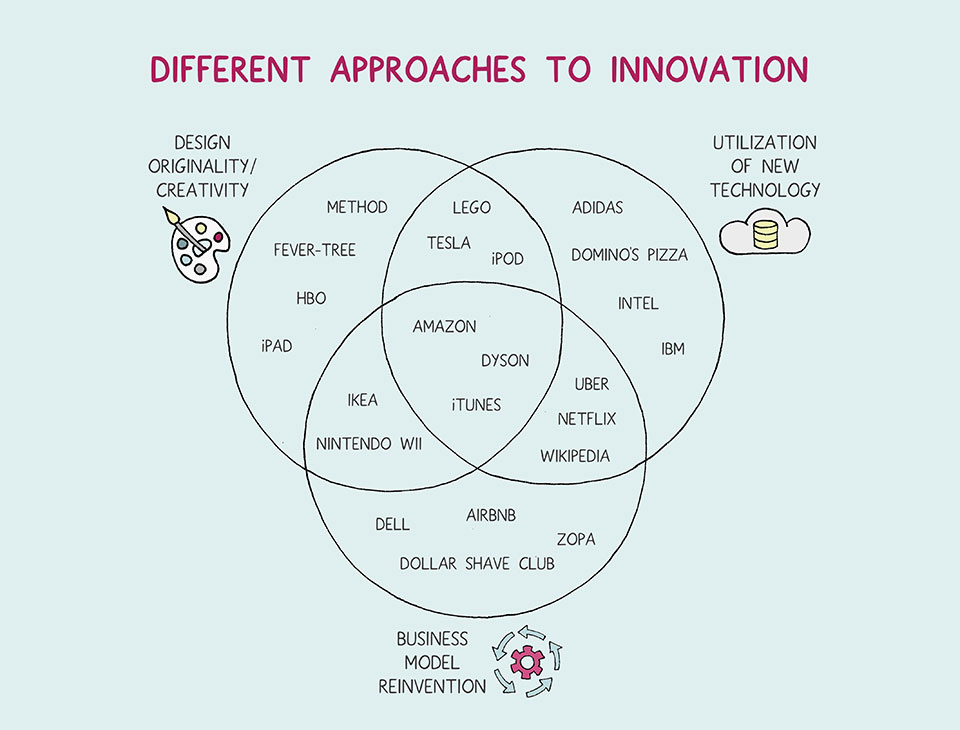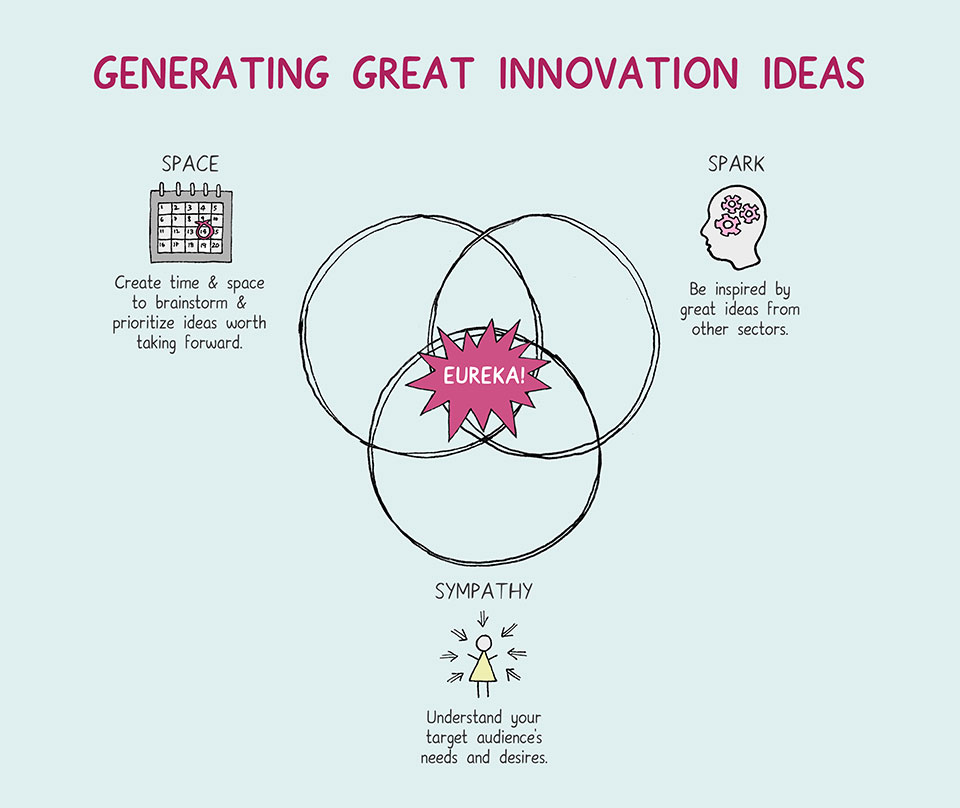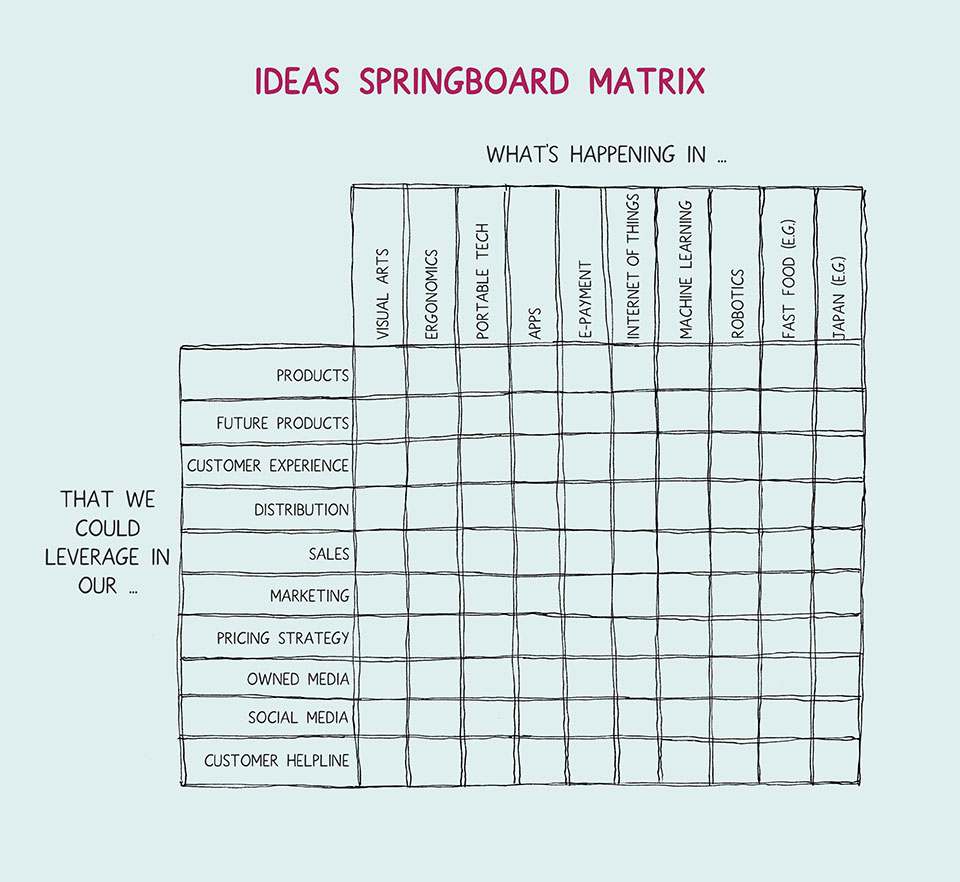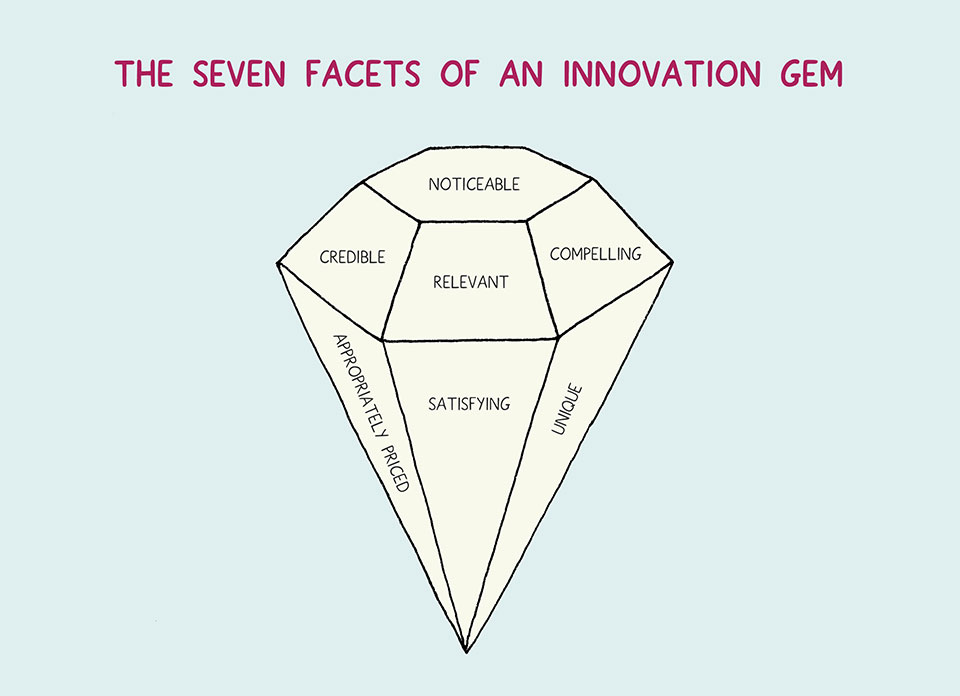How to Identify Growth Opportunities?

If a company is unsure where future growth will come from, innovation is often the key, but many businesses struggle to leverage the opportunity. A McKinsey poll has found that 94% of global executives were dissatisfied with their organization’s innovation performance. Leaders know that even a modest improvement in the odds of an innovation succeeding can provide major competitive advantage because the cost of product development is high and the majority of new products fail (70% of consumer-packaged goods, for example). Companies that innovate well and use the profits to fund further innovation make it hard for competitors to keep up.
The chances of success can be enhanced by giving marketing the lead role in the innovation process, rather than the technicians. The Chief Marketing Officer should be given responsibility for:
- Identifying the approach to innovation best suited to the company
- Defining what innovation needs to achieve and guiding Research and Development
- Coming up with innovation ideas based on consumer insights
- Using consumer feedback to guide product development
Innovation Strategy
There are three broad approaches to innovation a business can take.
Which approach or combination of approaches is right for a business depends on its strengths versus competitors and how likely the industry is to be disrupted by new business models.
Business-model Reinvention
Many of today’s biggest companies have succeeded because they adopted a new business model, often enabled by emerging technology, that provided a major advantage over established players. Amazon exploited the internet, Airbnb leveraged the sharing economy technology and IKEA decimated costs by producing flat-packed furniture. Companies such as IBM and Netflix have reinvented their own business model to create growth, but others have lacked the courage to do so. Kodak engineer Steve Sasson invented the digital camera in 1975. According to Sasson, the reaction from company management was that the concept was ingenious but that he shouldn’t tell anyone about it. Kodak saw itself as a manufacturer of photographic film, paper and chemicals and treated digital photography as an enemy to be defeated. If it had, instead, seen itself as a company helping people capture and share memories, it might have avoided bankruptcy. If disruption is on its way, marketers need to seize the opportunity, and if that means reshaping an established business, so be it.
Utilization of New Technology
Even if technology won’t bring about new business models, every company should look for opportunities to use technology to enhance consumer value before competitors do.
According to Dennis Maloney, Chief Digital Officer at Domino’s Pizza, the company went from being a pizza company that sells online to an e-commerce company that sells pizza and became the world’s largest pizza chain as a result.
Design Originality/Creativity
Technology isn’t essential to great innovation – creative ideas can be just as important. Companies such as Nintendo, HBO, Pixar and Lego have thrived thanks to a continual flow of original and imaginative ideas that surprise and delight their customers. When Sony and Microsoft launched consoles with state-of-the-art technology, Nintendo managed to attract a whole new demographic to the category with the Wii, a low specification console with totally new types of game and fitness activities.
Consumer-driven innovation objectives
Great consumer understanding, based on marketing insight, is always the key to successful innovation. In 1975, Sony had a near monopoly of the video recorder market with its Betamax system yet lost it quickly when JVC launched VHS in 1976. The picture and sound quality were nearly identical, yet VHS had one major advantage over its rival. Its cassettes were larger and could record two hours of video, whereas Betamax’s admittedly neater cassettes could record just one hour. JVC understood that being able to record a whole movie was vital to consumer adoption.
Google Glass is an example of a product that utilized amazing technology but quickly failed in market because of a lack of consumer understanding. Launched in 2013, Google Glass was a pair of glasses that allowed users to use a mobile internet browser, camera, maps, calendar, and other apps using voice commands and have the results projected directly into their eyes. The product failed because there was no clear consumer benefit of using the glasses compared to a mobile phone. In fact, it had several downsides that marketing research would have identified. These included their unfashionable styling, the suspicion that users were recording video without people knowing (hence the term ‘glasshole’), the high price ($1,500) and poor battery life (c.5 hrs).
When it comes to understanding what consumers would and wouldn’t value from innovation, marketing needs to a take a leading role in ensuring R&D is focussed on potential ‘problems to be solved’ that the target audience cares about.
Consumer-inspired Ideation
It’s good practice to set aside time, once or twice a year, to generate ideas for enhancing customer value and reviewing innovation priorities.
Space
For an ‘ideation’ session to be effective, attendees need be in an environment that encourages creativity. Natural light, bright colours, space to move around, fresh air and an inclusive, trusting atmosphere can all make a huge difference to the quantity and quality of ideas generated.
Sympathy
The most powerful ideas come from a deep understanding of the consumer, so the team should be immersed in information and insights about the target audience, including their needs and desires related to the category and beyond.
Spark
Creativity occurs when two separate ideas are brought together to produce something new. Exposing people to innovation in other fields and sectors is a good way to spark ideas, particularly if this includes examples of how new technologies have been used to enhance products and customer experiences.
A good way of providing inspiration is to use an ideas springboard matrix. The marketing/market research team needs to spend time discovering the latest thinking and recent innovations in areas that could spark relevant ideas for the brand. The fields listed in the matrix below are a useful starting point. In the ideation session, the team hears about the latest developments in these areas and explores whether a similar idea might create customer value in the brand’s category.
The matrix highlights the variety of ways in which a brand could innovate to serve customers better. The most successful brands consider how every element of the marketing mix could contribute to a better brand experience, from the communications and sales experience to after-sales and beyond, drawing on the latest ideas, wherever they come from.
Consumer-guided Development
Companies that generate lots of great innovation ideas are likely to be the most successful, but only if they know how to identify the ones with true potential. Ideas to develop, and ultimately launch, should be selected using a set of proven success criteria such as ‘the seven facets of an innovation gem’: noticeable, relevant, credible, compelling, appropriately priced, satisfying and unique.
Noticeable
New products benefit from having a way to stand out from the crowd. Distinctive names, logos and packaging can all help.
Relevant
Whatever the product is or does, consumers must be able to see its value to them.
Credible
People must believe that the product is likely to deliver on its promise. Brands with a reliable track record have an advantage here.
Compelling
In many categories, consumers have a number of relevant alternatives available to them, so the product needs to be highly compelling if it is to be chosen above others. This is especially true if buying the product requires significant effort from the customer, such as switching bank accounts.
Appropriately priced
The price needs to be in line with whatever consumers consider to be comparable alternatives. The goal is a for a win-win situation: consumers feel they are getting good value when paying the asking price and the business makes a good profit.
Satisfying
The long-term success of a product depends mainly on how well it lives up to expectations. If customers are highly satisfied with their experience, not only are they likely to continue buying it, but they’re also more likely to recommend it and to buy other products from the brand.
Unique
In any competitive market, brands are constantly vying for consumers’ attention, so even a product with a lot to offer can be lost in the noise and fade from memory quickly. Having a unique, distinctive characteristic helps a product to stick in mind. If the characteristic also reminds people of the brand’s benefits, it can encourage a trial and give users a justification for continuing to buy the brand. When Toilet Duck launched in the early 1980s, it was essentially the same as existing brands of toilet cleaner, but the bottle had a unique feature – a neck shaped like that of a duck that made it easier to squirt the liquid under the toilet rim. This feature helped the brand quickly become a market leader, command a higher price than any competitor for more than ten years, and ensure high brand saliency to this day.
Written by Dan White.












